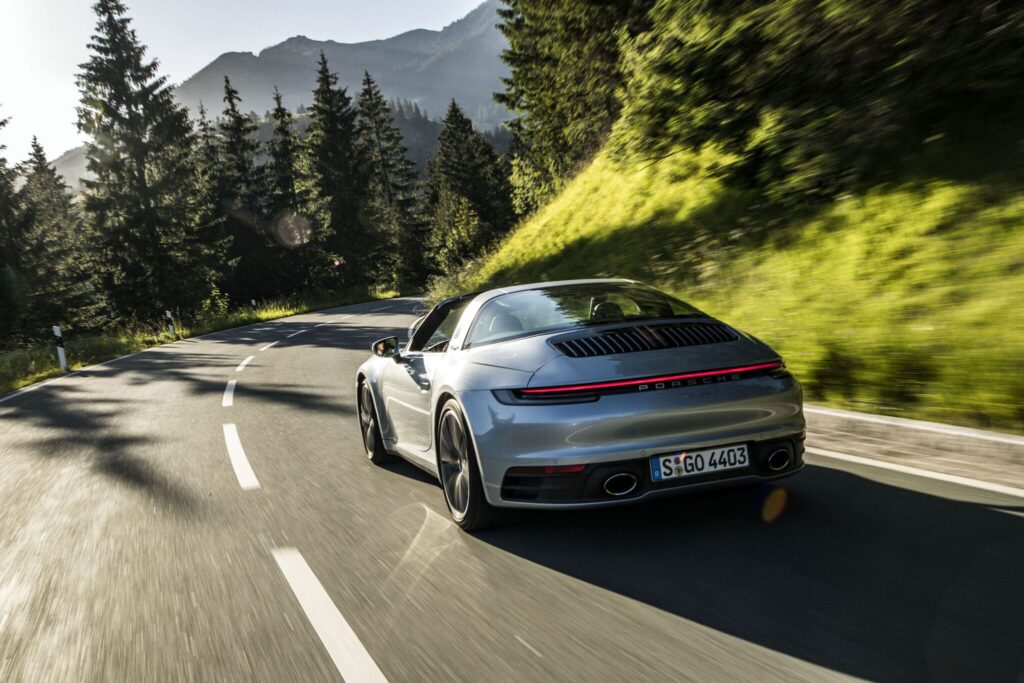
The Porsche 911 Targa not only looks like a modern classic, it also harkens back to the early years of the famous brand. Thanks to the ingenious roof construction, you truly experience the "open-air sensation," but still feel secure.
Text: Erik Kouwenhoven
Online editing: Natasha Hendriks
In the mid-1960s, there is quite a bit going on around car safety in the US. A problem for Porsche, as the brand fears that the discussion will eventually lead to a 911 Cabriolet no longer being allowed to be sold there. Although it ultimately never happens, that is in a nutshell what we have the 911 Targa to thank for. Indeed, in 1967 Porsche introduced this model, which combined open driving with the safety of a coupe. The middle part of the roof and the rear window can be removed, but not the roll bar. So if the car were to flip over unexpectedly, you would not be immediately scalped. The word "targa" comes from the Italian language and means plate/shield. Porsche chose this name because the brand had been successful in the famous road race on the island of Sicily, the Targa Florio. The fact that the rear window of the Targa consisted of a transparent piece of plastic attached to the body with a zipper was not seen as a problem at the time. Nor would any Porsche customer in 2014 appreciate the folding Targa roof section that you could - with any luck without losing fingers or other limbs - fold and stow under the front lid. Porsche therefore soon supplied a glass rear window as an option for those who wanted more comfort and less zipper misery. Shortly thereafter, in 1968, the glass rear window became standard and the softwindow an option.
The 911 Targa has always remained a bit of an oddity in Porsche's lineup. Still, the Targa was a popular model in its early years. Later, stories of the Targa's drawbacks began to prevail. The eternal whistling along the cracks of the roof, the lugging of the heavy roof plate that was difficult to disassemble on your own, and the ugly sight of bent and worn rubbers slowly began to prevail. A car wash was also taboo for Targa drivers, unless you needed a soapy shower yourself. Porsche eventually opted for the solution of a large sunroof in later models, making wind noise complaints and incontinence problems a thing of the past. Also, the car looked a lot more masculine. But then the Targa purists began to complain. Because, of course, this was no longer a "real" Targa. Since 2014, the classic Targa is back in a new guise, with the entire middle section of the roof disappearing into the back of the car. The model looks cool and retro with its magnesium roll bar compared to its recent predecessors. Anno 2020, this intermediate form of the coupe and convertible makes up about a quarter of total 911 sales.
Then it's time to drive. Hard driving we want. But the Targa thinks otherwise. With its relatively comfortable-feeling suspension and the autumn sun on our skulls, the 911 rocks us along the dike roads. So the 911 Targa is not a car that challenges you to drive fast. The question is why. August Achleitner, Porsche 911 product manager answers, "We deliberately tuned the suspension less sharply than that of the coupe. For example, we increased the compression and rebound stroke of the suspension and also made other elements more comfortable." With that, the 911 Targa is by no means a ladies' hairdresser's car, because press the Sport Plus button and the car puts all systems into street-fighter mode. Anyway: the Targa is not the very sharpest 911, not least because of the extra weight that comes with the roof construction, among other things. A Targa weighs about 110 kilograms more than the coupe. And so, with the Targa, we mainly do what this would-be classic is good at: cruising quietly over embankments, through Switzerland, or along the coastal roads of countries like France, Italy and Spain, where life is good.
Pre-order MASTERS via the button below with substantive reports, great photography and unique brands, trends and places around the world.
© 2024 MASTERS EXPO. All rights reserved.